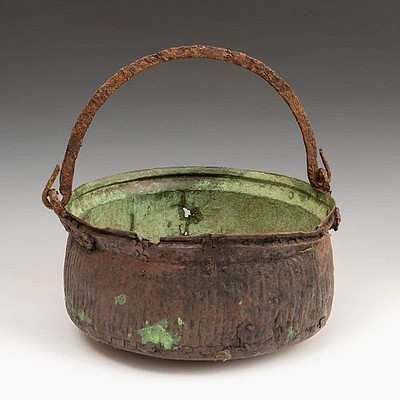Fountain with putti or erote. Roman Empire, 2nd century AD. In marble. Measures: 70 x 30 x 20 cm. figure; 15,5 x 30 x 30 x 30 cm. (pedestal).
Lot 63
About Seller
Setdart Auction House
Carrer Aragó 346
Barcelona
Spain
Setdart Subastas was born in 2004 and is currently the first online art auction in Spain with solidity, prestige and reliability guaranteed by our more than 60,000 users. Setdart has a young, dynamic and enterprising team ready to successfully manage the purchase and sale of art works through custom...Read more
Estimate:
EUR€18,000 - EUR€20,000
$19,354.84 - $21,505.38
Absentee vs Live bid
Two ways to bid:
- Leave a max absentee bid and the platform will bid on your behalf up to your maximum bid during the live auction.
- Bid live during the auction and your bids will be submitted real-time to the auctioneer.
Bid Increments
| Price | Bid Increment |
|---|---|
| EUR€0 | EUR€10 |
| EUR€200 | EUR€25 |
| EUR€500 | EUR€50 |
| EUR€1,000 | EUR€100 |
| EUR€3,000 | EUR€200 |
| EUR€5,000 | EUR€500 |
| EUR€10,000 | EUR€1,000 |
| EUR€20,000 | EUR€2,000 |
| EUR€50,000 | EUR€5,000 |
About Auction
By Setdart Auction House
Dec 22, 2021
Set Reminder
2021-12-22 08:30:00
2021-12-22 08:30:00
America/New_York
Bidsquare
Bidsquare : Archaeology, Session I
https://www.bidsquare.com/auctions/setdart-auction-house/archaeology-session-i-8050
Setdart Auction House sofia@setdart.com
Setdart Auction House sofia@setdart.com
- Lot Description
Fountain with putti or erote. Roman Empire, 2nd century AD. In marble. Measures: 70 x 30 x 20 cm. figure; 15,5 x 30 x 30 x 30 cm. (pedestal). Sculpture of a child holding an amphora or jar on his left shoulder. The hollowness of the jar indicates that it was a fountain, probably designed to decorate a domus or villa, that is, a domestic space. They were very frequent in the gardens and peristyles of the Roman villae this type of sculptures of infants, Erotes or lovebirds in various attitudes. In these family gardens, the statues of Bacchic style, by their relationship with nature, contributed to create an atmosphere where to enjoy a bucolic environment. The erote in question bends his torso slightly to carry the vessel, which gives a naturalness to the posture. The kinky hair frames soft features with almond-shaped eyes and full lips. The child wears a cloak intended not so much to cover his nakedness as to cushion the weight of the jar. It falls to the ground in soft folds. The sculptural reference has its origin in Hellenistic representations, from models that inspired the Roman statuary of the High-Imperial period. In the phidiac reliefs of the Parthenon, in the context of the Panathenaic festivals, young women in procession, the hydrophorae, go to offer water to the divinity, carrying an amphora on their left shoulder. However, it was not until later times that this theme became more popular and its use became generalized as a fountain decoration. Its origin with this value is to be found in Hellenism, a time when an artistic movement known as "Hellenistic Rococo" was generated, characterized by the use of sculptures with an eminently decorative character, among which the infantile representations, erotes or putti will proliferate. These subjects will later have an important development in Roman times and will play an important ornamental role in certain spaces, especially in private areas, in those areas of the domus dedicated to the enjoyment of leisure.
- Shipping Info
-
In-house shipping available. Please inquire at admin@setdart.com.
-
- Buyer's Premium



 EUR
EUR CAD
CAD AUD
AUD GBP
GBP MXN
MXN HKD
HKD CNY
CNY MYR
MYR SEK
SEK SGD
SGD CHF
CHF THB
THB

















